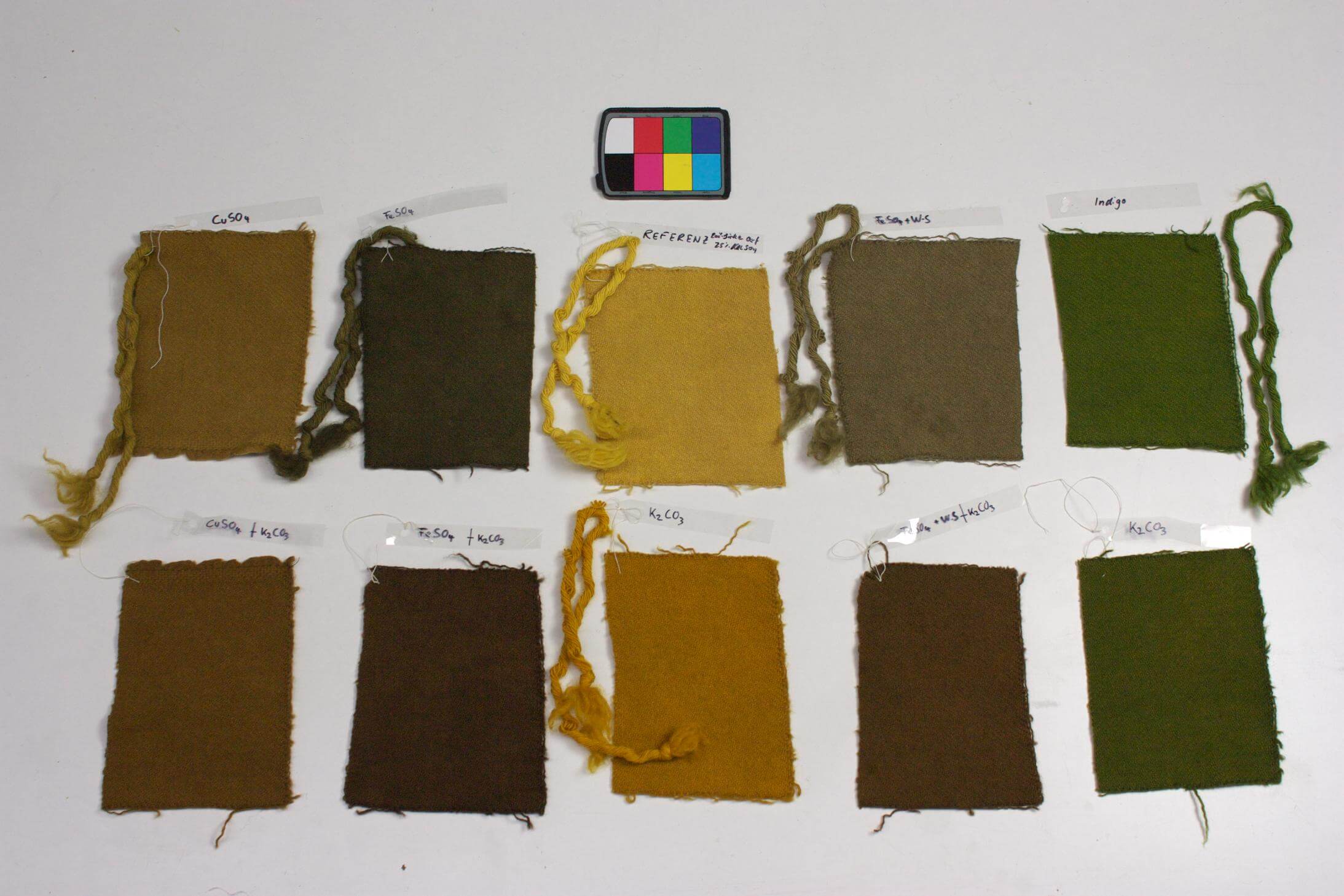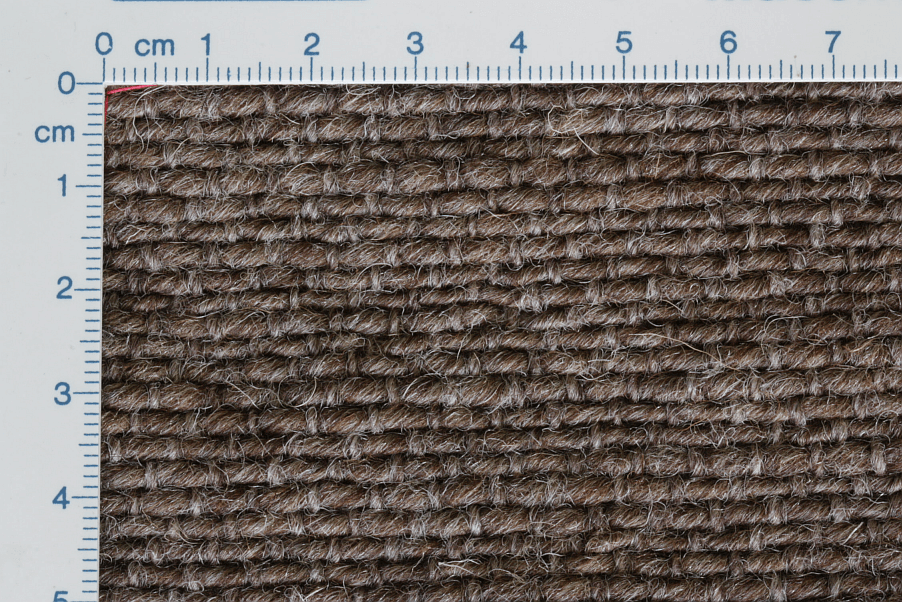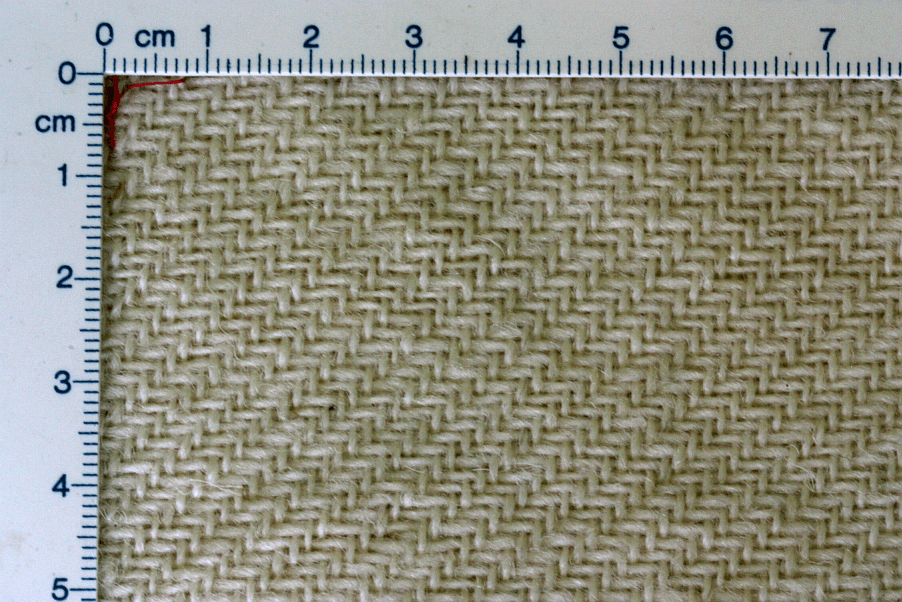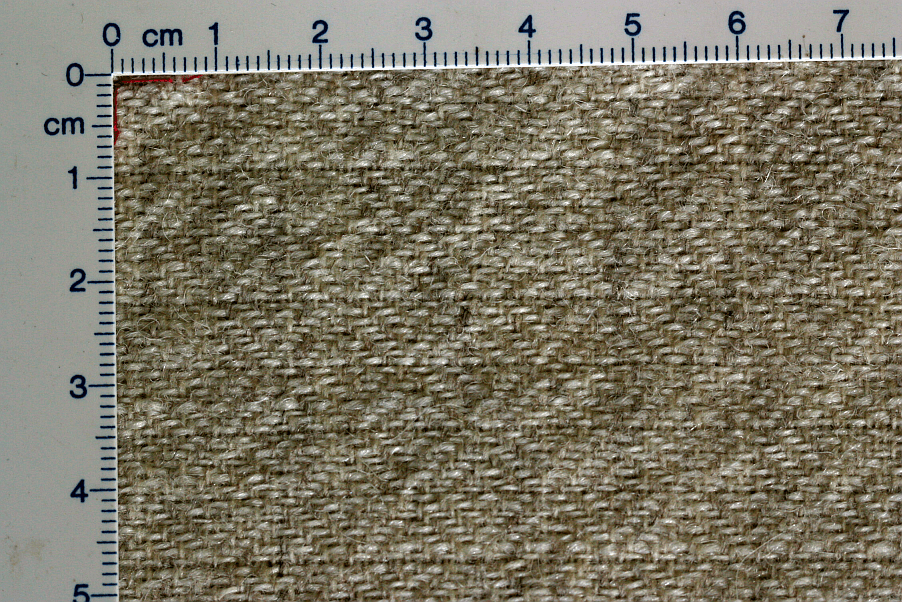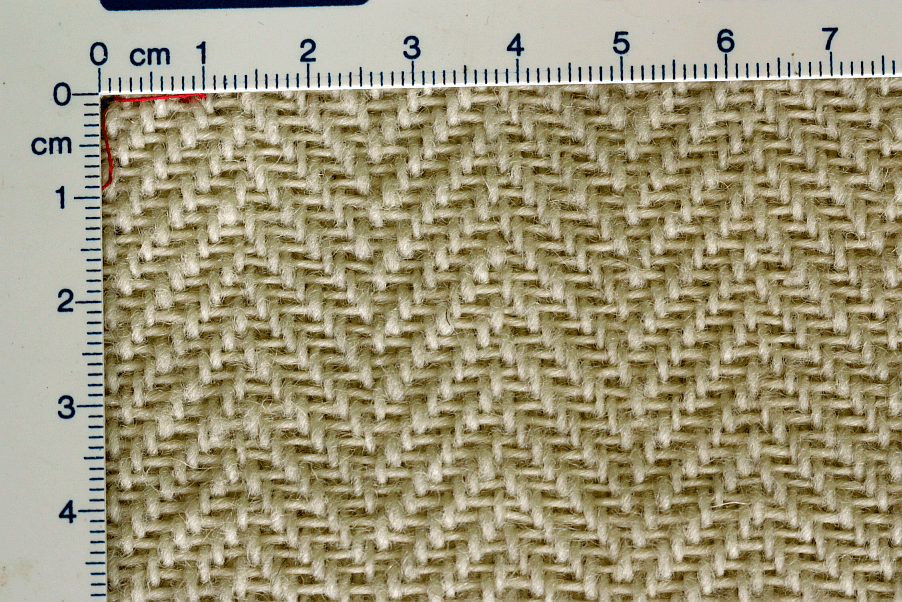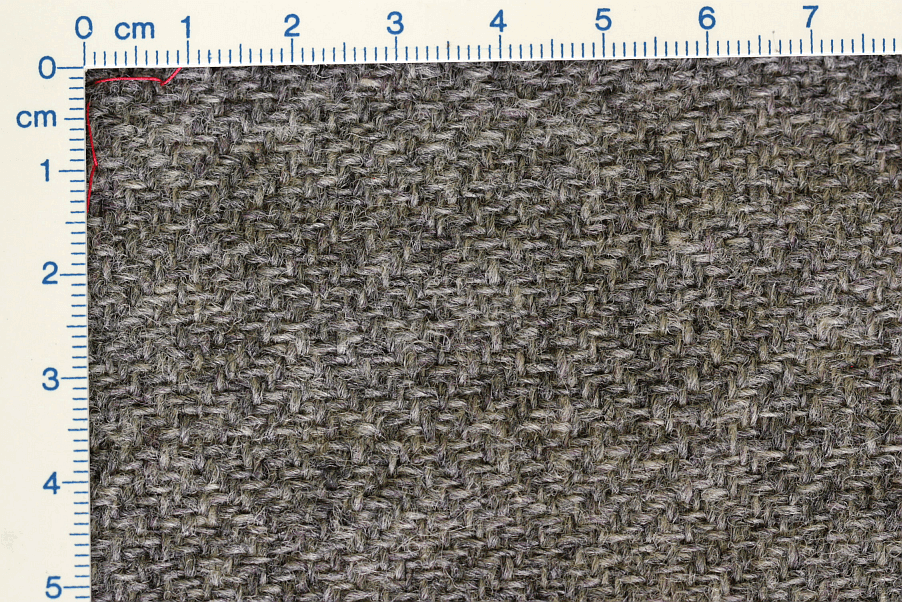At least re-use - that is, after all, what was done with the Bernuthsfeld tunic. Case in point?
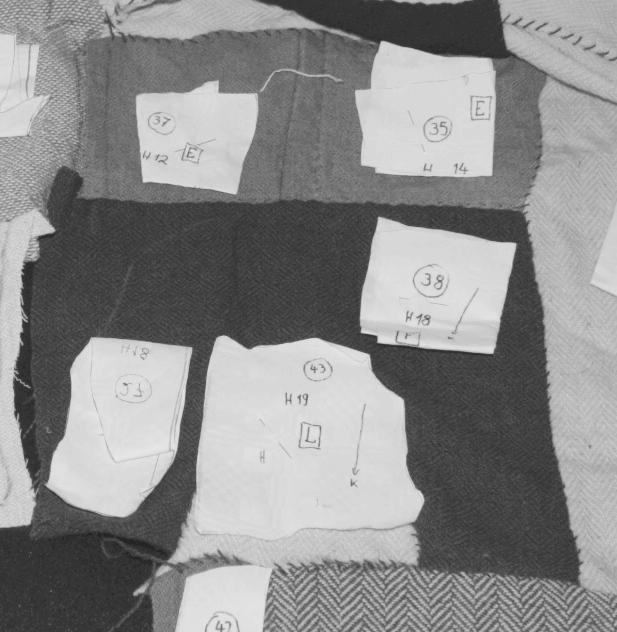
Patches 35-38, our numbering. (Did I mention we gave out new numbers for the patches, as not all of them are covered in the drawing that Hahne did?)
You can hopefully see that there is a light diamond twill fabric and a darker diamond twill fabric, and the lighter one has its own seams, done in a different hand than the main tunic makers' one (which is the rather clumsy overcast stitch around the patches). There is also a proper hem at the bottom of the light fabric, which in turn is stitched to the darker fabric, which has its own proper hem at its own bottom.
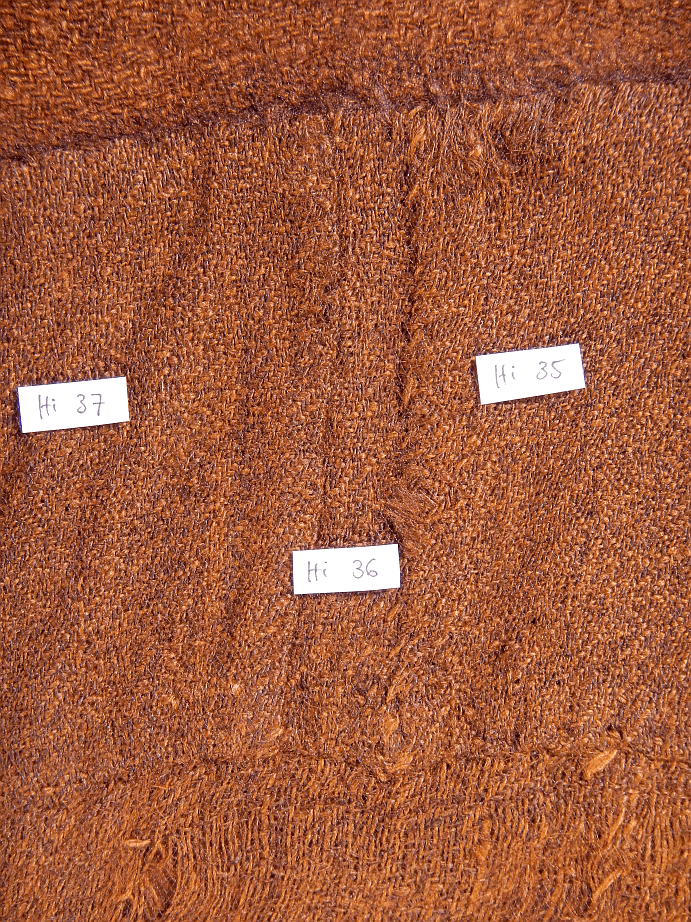
So my interpretation is this one: The light diamond twill fabric was once a kind of garment, sporting said seams and hem. At some point, it was worn down so much or had gotten out of fashion so completely that it was taken apart, and the still-okay bits were used again, to make a new garment (maybe a child's tunic) out of the light fabric together with the darker fabric. The two are not the same, but rather similar, so they'd work nicely together.
The colour difference in the original today is not quite as pronounced as it is in our reconstruction, which is partly due to the difference in the base colour of the fibres in our fabrics being larger than in the original and partly due to our decision to make the fabrics a bit more different in order to clearly show that they are two different pieces with different history.
In any case, here we have a beautiful example of re-using fabric not once, not twice, but three times as part of a garment - first, the lighter fabric on its own, then together with the darker one in a garment, then as a big patch in the Bernuthsfeld tunic.
(Also it was really, really nice to sew the proper seams and hem in the light fabric, and an amazing contrast to do this sandwiched right inbetween doing some Bernuthsfeld overcast seams!)

Patches 35-38, our numbering. (Did I mention we gave out new numbers for the patches, as not all of them are covered in the drawing that Hahne did?)
You can hopefully see that there is a light diamond twill fabric and a darker diamond twill fabric, and the lighter one has its own seams, done in a different hand than the main tunic makers' one (which is the rather clumsy overcast stitch around the patches). There is also a proper hem at the bottom of the light fabric, which in turn is stitched to the darker fabric, which has its own proper hem at its own bottom.

So my interpretation is this one: The light diamond twill fabric was once a kind of garment, sporting said seams and hem. At some point, it was worn down so much or had gotten out of fashion so completely that it was taken apart, and the still-okay bits were used again, to make a new garment (maybe a child's tunic) out of the light fabric together with the darker fabric. The two are not the same, but rather similar, so they'd work nicely together.
The colour difference in the original today is not quite as pronounced as it is in our reconstruction, which is partly due to the difference in the base colour of the fibres in our fabrics being larger than in the original and partly due to our decision to make the fabrics a bit more different in order to clearly show that they are two different pieces with different history.
In any case, here we have a beautiful example of re-using fabric not once, not twice, but three times as part of a garment - first, the lighter fabric on its own, then together with the darker one in a garment, then as a big patch in the Bernuthsfeld tunic.
(Also it was really, really nice to sew the proper seams and hem in the light fabric, and an amazing contrast to do this sandwiched right inbetween doing some Bernuthsfeld overcast seams!)




